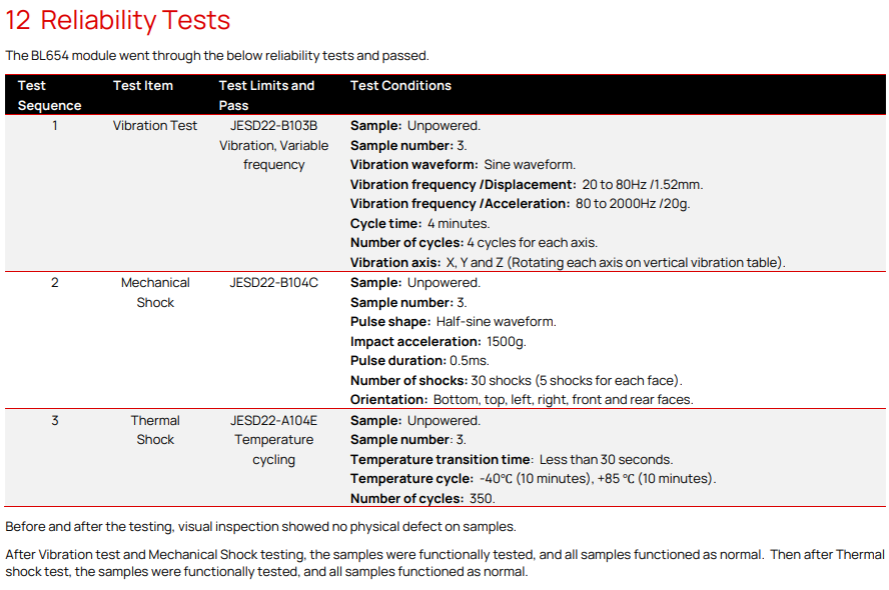Trial by Fire: How we Test
In order to simulate damaging events for testing, we work with external reliability testing partners to subject our hardware to standardized conditions and to achieve reliability certifications. Not all tests apply to all modules, but they broadly fall into a few categories: vibration testing, mechanical shock testing, and thermal / thermal shock testing. These environmental factors – impacts, vibrations, and fluctuating temperatures – are chief among the stressors that electronic components face in the real world.
As mentioned, there are standards that help a manufacturer be sure their tests represent those real world challenges. JEDEC is a global leader in providing standards for manufacturers in microelectronics, and they are the authors and originators of the relevant standards here. We test to the following:
- Vibration, Variable Frequency JESD22-B103B: Testing to this standard involves subjecting module samples to destructive levels of continuous vibration. A sine wave-shaped vibration pattern subjects the samples to vibration that displaces them from 20 to 80 Hz across 1.52 mm, and accelerates from 80 to 2000 Hz with 20g of force. All of this occurs across four minutes, four times per 3D axis for a total of 48 vibration cycles. This simulates extreme vibrations with many different characteristics, looking for any scenario where a module could fail.
- Mechanical Shock JESD22-B104C: Here, samples are subjected to a half-sine pattern of mechanical displacement, simulating impact followed by a hard stop. This is performed with an acceleration force of 1500g, or about 3.3 pounds, 30 times and in all six directions (from the bottom, top, left, right, front, and rear).
- Temperature Cycling JESD22-A104E: This test simulates dramatic temperature shifts over very short intervals of time, which have the potential to deform electronics and their internal electrical connections. Over a window of 30 seconds, test hardware is subjected to fluctuations between -40˚C to +85˚C (-40˚F to +185˚F) and back again. This shock could damage many electronics over even a few repetitions, but this is repeated over and over for 350 cycles.
These are the primary tests we conduct with our modules. There are others, such as drop testing, which involve literally dropping hardware and then inspecting for damage. But the above are commonly tested across our modules, and are representative of the likely wear conditions for microelectronics in challenging fields.
Information on the reliability testing we conduct for each module can be found in the module’s datasheet, in the chapter titled “Reliability Tests.” The following is an example for our BL654 Bluetooth LE module:
